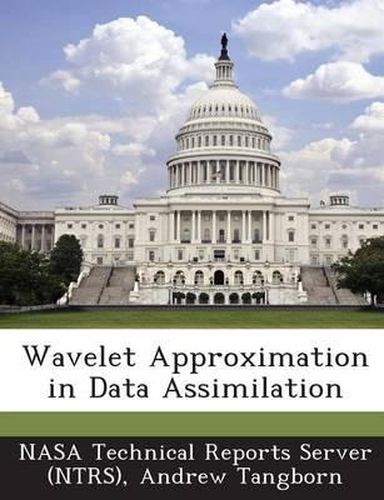Readings Newsletter
Become a Readings Member to make your shopping experience even easier.
Sign in or sign up for free!
You’re not far away from qualifying for FREE standard shipping within Australia
You’ve qualified for FREE standard shipping within Australia
The cart is loading…






Estimation of the state of the atmosphere with the Kalman filter remains a distant goal because of high computational cost of evolving the error covariance for both linear and nonlinear systems. Wavelet approximation is presented here as a possible solution that efficiently compresses both global and local covariance information. We demonstrate the compression characteristics on the the error correlation field from a global two-dimensional chemical constituent assimilation, and implement an adaptive wavelet approximation scheme on the assimilation of the one-dimensional Burger’s equation. In the former problem, we show that 99%, of the error correlation can be represented by just 3% of the wavelet coefficients, with good representation of localized features. In the Burger’s equation assimilation, the discrete linearized equations (tangent linear model) and analysis covariance are projected onto a wavelet basis and truncated to just 6%, of the coefficients. A nearly optimal forecast is achieved and we show that errors due to truncation of the dynamics are no greater than the errors due to covariance truncation.
$9.00 standard shipping within Australia
FREE standard shipping within Australia for orders over $100.00
Express & International shipping calculated at checkout
Estimation of the state of the atmosphere with the Kalman filter remains a distant goal because of high computational cost of evolving the error covariance for both linear and nonlinear systems. Wavelet approximation is presented here as a possible solution that efficiently compresses both global and local covariance information. We demonstrate the compression characteristics on the the error correlation field from a global two-dimensional chemical constituent assimilation, and implement an adaptive wavelet approximation scheme on the assimilation of the one-dimensional Burger’s equation. In the former problem, we show that 99%, of the error correlation can be represented by just 3% of the wavelet coefficients, with good representation of localized features. In the Burger’s equation assimilation, the discrete linearized equations (tangent linear model) and analysis covariance are projected onto a wavelet basis and truncated to just 6%, of the coefficients. A nearly optimal forecast is achieved and we show that errors due to truncation of the dynamics are no greater than the errors due to covariance truncation.